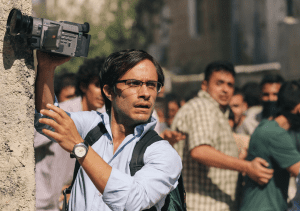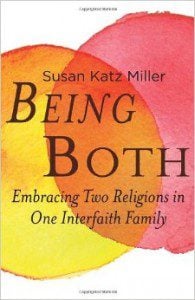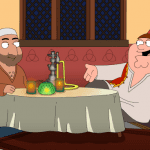 |
The publication of twelve caricatures concerning Islam and figures from Muslim history and tradition in the September 30, 2005, edition of the Danish newspaper Jyllands-Posten, ignited first anger and then violent street protests across much of the Muslim world. If contemporaneous news reports consulted by political scientist Jytte Klausen are accurate, two hundred people died and eight hundred people were injured in protests and riots stretching from Damascus, Syria to Peshawar, Pakistan to the northern Nigerian city of Katsina.
Beyond the immediate human toll, the roiling controversy over the Danish cartoons left an enduring impression on both sides of the debate. On the one hand, those intrinsically hostile to Muslims qua Muslims invoke the reaction to the cartoons as evidence of Muslims’ inability to cohabitate with others. On the other hand, many Muslims saw in the unqualified Danish defense of free speech further evidence of European government’s discriminatory tilt, a hunch partially confirmed by the recent Swiss referendum vote to prohibit construction of minarets across the country. However riled advocates on either side became by it though, the cartoon affair and its complex aftermath of street protests, diplomatic demarches, and fevered editorials seemed to yield little, if any, succor for free speech or anti-discrimination principles.
The publication of Jytte Klausen’s very fine new book The Cartoons that Shook the World by Yale University Press should be an opportunity to revisit with calmer rigor the events and implications of the cartoons. The strengths and insights of Klausen’s book, however, have been overshadowed by criticism of the Press’s decision to “censor” the book by reversing its decision to publish the cartoons despite the Yale Press’s initial decision to do so. Cries that the press has appeased, and thus encouraged, violence have drowned out careful consideration of the book’s contents.
But Klausen’s is a thoroughly research, empathetic, and thoroughly moral and compassionate account. The furor about the Press’s decision to not include the cartoons is deeply regrettable. Attention should not be on the Press’s decision but on her book’s implications about free speech, the so-called clash of civilizations, and the situation of Muslims living in Europe and North America.
A Brandeis political science professor, Klausen is the author of The Islamic Challenge, a volume documenting her empirical research on the complex socio-economic, cultural, and political trajectories of Muslim communities in Europe. Challenging the monochromatic portrayals from pundits like Bruce Bawer and Christopher Caldwell, Klausen found Muslims finding and leveraging manifold ways to find voice in European political institutions and culture. Rather than accept simplistic accounts of cultural conflict, she canvassed specific disputes, for example around the manner of killing animals for halal meat or about grave sites or about the situating of mosques to show a complex process of negotiation, resistance, and accommodation.
The Cartoons that Shook the World should also shake easy and complacent assumptions on all sides. Based on interviews and meticulous analysis of the cartoons themselves as well as responses to them, Klausen shows how unpredictable events were. Rather than choreographed campaigns, the diplomatic and popular initiatives against the cartoons emerged in fits and starts, with Egypt leading diplomatic protests and a group of four Danish imams trying to instigate popular resistance in Europe and the Middle East. Despite months of diplomatic parlaying by the Egyptian government and the Organization of the Islamic Conference, the Danish government of Anders Fogh Rasmussen nevertheless had a ham-fisted and half-hearted response that at least allowed the inference that it did not disagree with the negative stereotypes conveyed by some of the cartoons.
Two themes emerge from her account (or at least strike me). First, on all sides, responses to the cartoons had less to do with outrage or a sense of legitimate grievance, and more to do with strategic governmental calculations. On the Danish side, Rasmussen acted under the shadow of an electoral threat from Pia Kjaersgaard’s Danish People Party. Klausen labels the DPP “nativist,” but tellingly notes the DPP’s aggressive use of libel actions against critics. On the Egyptian side, the cartoon crisis was a way to turn the rhetoric of human rights in international bodies against the U.S. and its allies, as well as to send a sharp reminder of the importance of strong governments in the Middle East to keep the so-called “Arab street” in check.
By emphasizing both these naked political concerns, and also the miscommunication and confusion that surrounded debate on the cartoons, Klausen goes far in demystifying what happened. Her analysis of the interaction between private mobilizations and the diplomatic strategies of Middle Eastern and other Islamic states is especially insightful. In a telling aside, she observes that the Dutch government was able to manage and limit international backlash based on Geert Wilder’s juvenile film Fitna, which was arguably far more toxic than the cartoons.
The story laid out in Klausen’s book opens up intriguing questions. Consider first the light it casts on whether there a necessary and irreconcilable conflict either between Islam specifically and free speech, or more generally “multicultural” and speech norms. As Klausen notes, Islam is not the only faith to have concerns about offensive religious imagery. In one of the books many nice ironies, she points to the Danish Lutheran church’s strong iconoclastic tendencies after the Reformation. More to the contemporary point, she highlights Danish and British blasphemy laws (the latter having been repealed recently).
The idea that speech offensive to religion should be regulated is hardly distinctive to Islam. The boundaries of permissible speech more generally have been subject to debate for centuries based on changing facts and attitudes. That Muslims in the West bring new perspectives to an ongoing debate is hardly grounds for concluding the debate is over. To the contrary, as Klausen shows, there was a range of positions expressed by Muslims about the cartoons. She quotes the well-known British Salafist imam Abdul Haqq Baker, who concluded that the cartoons were blasphemous but that this was solved for Muslims by the simple act of averting their gaze.
Klausen’s book, moreover, casts light on what kinds of speech ought to be criminalized or prohibited because of harmful effect on others. By bringing out the plurality of responses from European Muslims, she challenges the facile conclusion that the cartoons were “offensive” and hence merit prohibition. Offense, rather, is conditioned by prior laws and attitudes such that making offensive images illegal may in fact reinforce the hurt they inflict rather than allowing the offended to belittle and ridicule the parochial ignorance and chauvinistic stupidity of the speaker. If anything, the shadow of legal action and the concerted action of governments in the name of either free speech or antidiscrimination had the perverse effect of narrowing the space on both sides for genuine debate and deliberation. Indeed, one implication of Klausen’s narrative is that the international instruments and regimes for the protection of free speech and other human rights can sometimes be manipulated in ways that diminish those very rights.
What about the Yale Press’s decision not to publish the cartoons in Klausen’s book despite its initial commitment to do so? As a threshold matter, this is no “free speech” problem.” The Yale is a private entity, under no obligation to publish or refrain from publishing anything it at. Klausen has no First Amendment complaint against the Press. Its decision to publish neither the cartoons nor older images from Islamic art was not unconstitutional or illegal, even if it may have been unwise. Since the images are available on the internet, what is lost is not information but rather some of the reader’s time in putting the book down and doing some googling.
Moreover, it is not clear whether Klausen, once informed of the Press’s decision, could have gone to another press to publish the book in the form she wanted. It may be that the Yale Press’s decision would have induced other academic presses to take a similar line. Provided Klausen had other options, and even if she chose not to explore these options, the Yale Press’s decision seems no more or less blameworthy than any other decision not to honor a contract.
Also, it is far from clear that the appeasement argument is much good on its own terms. Imagine a book about organized crime that enabled mobsters to identify and locate informants in a witness protection program. Even if the publisher is not directly responsible for the mobsters’ actions, I think we are on shaky ground making accusations of “appeasement” against its decision to limit or excise revelatory details from the text at the cost of some narrative clarity. Given all this, to cavalierly champion an abstract principle of free speech against a real risk of physical harm to death to real people seems at a very minimum precipitous.
So the Yale Press had a good reason to refrain from publication. But it is also important to see that this does not mean one need agree with the outcome. In my view, the Press’s decision was reasonable and understandable, but it is, I hope, not the decision I would have reached. That is, I credit the Press’s reasons, but I would have weighed the facts and their implications differently.
The decision to include copies of the cartoons (which are freely available on the web) could not reasonably have been taken as a cause for offense when situated in Klausen’s careful analytic project. Others have shown that the religious prohibition on images is far from absolute or ahistorical. The imputation of contempt for Muslims simply is not available from a fair reading of Klausen’s book. (And to the extent some want to draw unfair inferences to justify violence, it seems likely they would find some spurious justifications for their violence somehow).
Moreover, as Klausen’s book makes clear, the path from Jyllands-Posten’s from street violence was far from inevitable or unmediated, as responses to “Fitna” show. There is ample reason to believe that publication could have gone forward in a way that minimized risk. Moreover, publication with the cartoons would have been an excellent platform for Muslims of good faith to challenge negative stereotypes and tired clichés. Rather than another feather in the cap of the clash-of-civilizations camp, it could have been a testament to the honest effort that almost all Muslims in the West make to live with faith and civil duty.
Aziz Huq is counsel in several cases concerning detention and national security policy, including Omar v. Geren and Munaf v. Geren, challenges to US citizen’s detention in Iraq. He has advised and spoken before legislators on issues related to the Separation of Powers, excessive secrecy, and illegal detention. His book with Fritz Schwarz, Unchecked and Unbalanced: Presidential Power In A Time of Terror (New Press), was published in 2007, and will be reissued in paperback in spring 2008. He is a frequent contributor to The Nation, the American Prospect, the New York Law Journal and Huffington Post. His articles have also appeared in the Washington Post, the New Republic, Democracy Journal, TomPaine, and Colorlines. In 2006 he was selected to be a Carnegie Fellows Scholar. He also teaches a seminar in Just War Theory and Terrorism at NYU School of Law.











